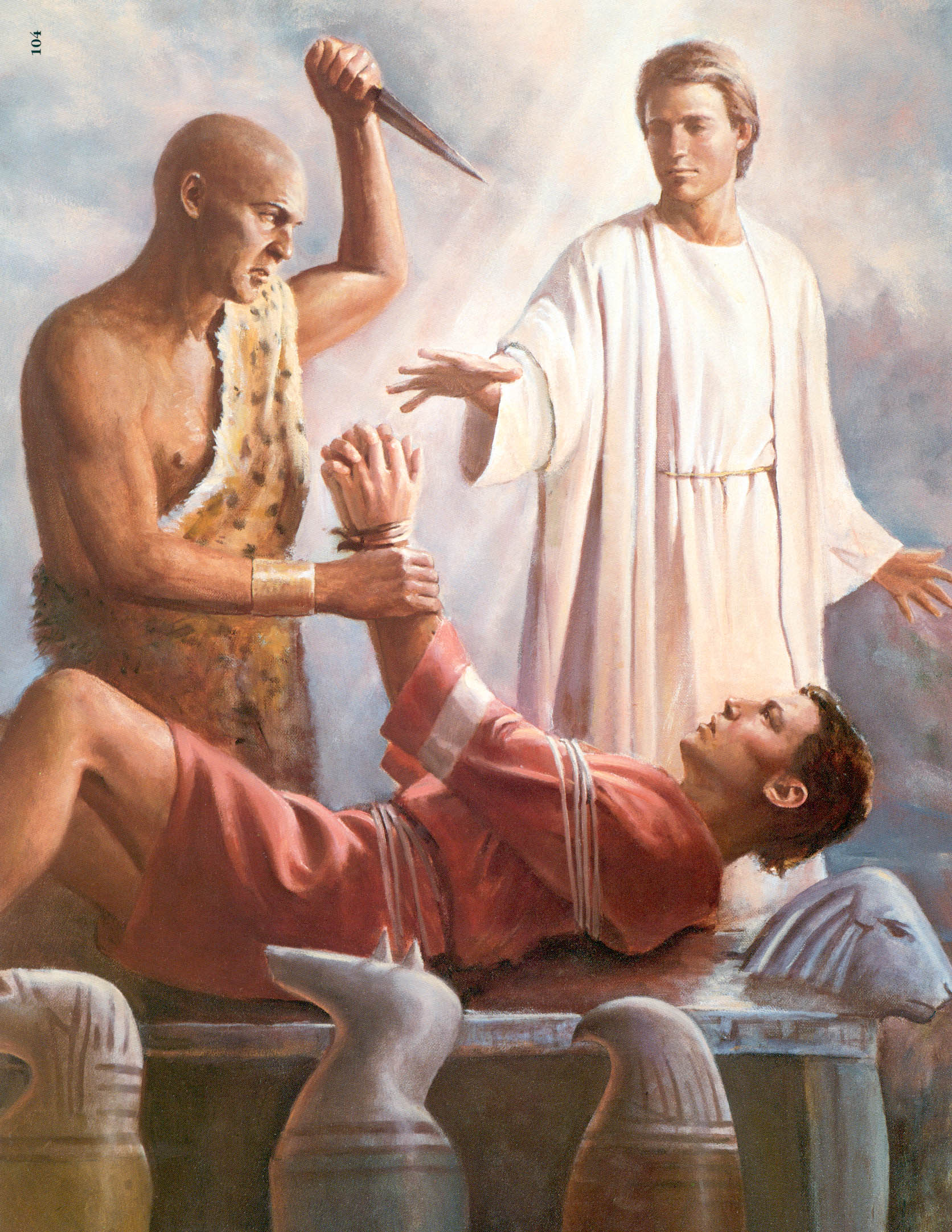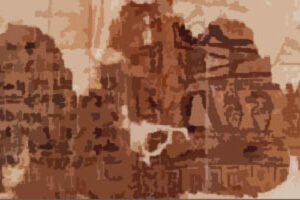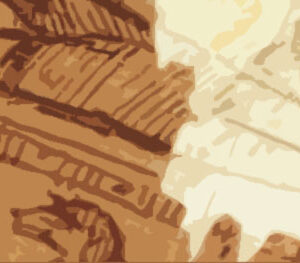1. Background
Perhaps the most problematic issue undermining the Church is the Book of Abraham. In July of 1835, a traveling showman named Michael Chandler brought an exhibit consisting of four Egyptian mummies and papyri to Kirtland, Ohio, then the home of the Latter-day Saints. The papyri contained Egyptian hieroglyphics, which intrigued Joseph Smith. Joseph was given permission to look at the papyri scrolls in the exhibit, upon which he pronounced a marvelous discovery:
“[W]ith W. W. Phelps and Oliver Cowdery as scribes, I commence the translation of some of the characters or hieroglyphics, and much to our joy found that one of the rolls contained the writings of Abraham, another the writings of Joseph of Egypt, etc. — a more full account of which will appear in its place, as I proceed to examine or unfold them. Truly we can say, the Lord is beginning to reveal the abundance of peace and truth.” (History of the Church, Vol. 2, p. 236).
Astounded by their good fortune in finding the writings of Abraham and Joseph of Egypt, several members of the Church purchased the papyri and mummies for $2,400. Shortly thereafter, Joseph apparently received confirmation that the scrolls contained the writings of Abraham.
The prophet took [the scrolls] and repaired to his room and inquired of the Lord concerning them. The Lord told him they were sacred records, containing the inspired writings of Abraham when he was in Egypt, and also those of Joseph, while he was in Egypt… (Orson Pratt, Journal of Discourses, vol. 26.)
Approximately seven years later, Joseph finished translating the scroll he called the Book of Abraham, but died before translating the Book of Joseph scroll.
The LDS Church believes the Book of Abraham was written by Abraham himself, as shown in the preface to the Book of Abraham:
“THE BOOK OF ABRAHAM
“TRANSLATED FROM THE PAPYRUS, BY JOSEPH SMITH
“A Translation of some ancient Records, that have fallen into our hands from the catacombs of Egypt. — The writings of Abraham while he was in Egypt, called the Book of Abraham, written by his own hand, upon papyrus.”
In addition, Wilford Woodruff recorded in his diary on February 19, 1842 that the Book of Abraham was literally written by Abraham. This would make the Book of Abraham the only existing original copy of a scriptural book. It would also date the record of Abraham (about 2,000 B.C.) to some 500 years prior to the Book of Genesis authored by Moses, between 1440–1400 B.C.
“Joseph the Seer has presented us some of the Book of Abraham which was written by his own hand but hid from the knowledge of man for the last four thousand years but has now come to light through the mercy of God.” (Diary of Wilford Woodruff, entry of February 19, 1842, LDS archives; also in Jay M. Todd, The Saga of the Book of Abraham (Salt Lake City, Utah: Deseret Book Co., 1969), p. 221.)
After completing the translation, Joseph used the Book of Abraham material in sermons, lectures and other writings. In 1880, the Book of Abraham, by unanimous vote of LDS authorities, was “canonized” as official scripture of the LDS Church as part of the Pearl of Great Price.
2. Suspicions and Concerns with Translation
When Joseph translated the papyri in the first half of the 19th century, no one in North America could decipher Egyptian. So Joseph Smith could say the hieroglyphics meant anything he wanted, and he could not be proven wrong. However, once scholars learned to decipher the Egyptian language, Joseph’s translation became subject to considerable analysis and examination. In virtually all instances, scholars concluded that the Book of Abraham was a fraud.
1856 Challenge: In 1856, a copy of the Pearl of Great Price found its way to the Louvre in Paris and was brought to M. Theodule Deveria. As one of the pioneers in Egyptology, Deveria was asked to offer an analysis of the book. Deveria immediately recognized all three facsimiles published with the Book of Abraham as copies of common Egyptian funerary documents, which he had examined on hundreds occasions. Deveria dismissed Joseph’s translation as fraudulent nonsense. His comments first appeared in a two-volume work by Jules Remy, “Voyage au Pays des Mormons.”
1912 Challenge: Joseph’s translation of the ancient papyri was further scrutinized by Rt. Reverend Franklin S. Spalding, Episcopal Bishop of Utah, in 1912. Spalding sent copies of the three facsimiles from the Book of Abraham to some of the world’s leading scholars of Egyptology, asking each for an independent assessment of Joseph Smith’s interpretations. The eight Egyptologists and Semitists who responded were unanimous in their scathing verdict: Joseph Smith’s papyri were common Egyptian funerary texts and wholly unrelated to the Book of Abraham.
- “Joseph Smith’s interpretation of these cuts is a farrago of nonsense from beginning to end,” adding that “five minutes study in an Egyptian gallery of any museum should be enough to convince any educated man of the clumsiness of the imposture; .…” (Dr. Arthur Mace, Assistant Curator, Metropolitan Museum of Art, New York, Dept. of Egyptian Art.)
- “[D]ifficult to deal seriously with Smith’s impudent fraud,” wrote another from Oxford, England. “Smith has turned the Goddess into a king and Osiris into Abraham.” (Dr. A. H. Sayce, Oxford, England.)
- “[The evidence] very clearly demonstrates that [Joseph Smith] was totally unacquainted with the significance of these documents and absolutely ignorant of the simplest facts of Egyptian Writing and civilization.” (James H. Breasted, Ph.D., Haskell Oriental Museum, University of Chicago.)
- “[T]he attempts to guess a meaning are too absurd to be noticed. It may be safely said that there is not one single word that is true in these explanations.” (Dr. W.M. Flinders Petrie, London University)
3. Book of Abraham Papyri Rediscovered: In 1966, a University of Utah researcher at the Metropolitan Museum of Art in New York made a startling find in the museum archives: he had rediscovered some of the original papyrus fragments that the LDS Church purchased in 1835. In 1967, the Museum presented the papyri as a gift to the Church.
Analyzing the rediscovered papyri (in conjunction with Joseph Smith’s personal papers) provides us with a great deal of insight into how Joseph attempted to translate the papyri. Specifically, the Church has retained a copy of the Grammar and Alphabet of the Egyptian Language (GAEL), which was written in one of Joseph Smith’s notebooks. The GAEL contains handwritten copies of the original translation work that showed the individual Egyptian figures from the papyrus down the left margin of a page, with the English translation next to it. The handwriting on these copies belonged to Joseph’s scribes, who helped him with the translation. These Egyptian figures appear in a portion of one of the recovered papyrus , all in exactly the same order that they appear on the handwritten “translation” pages. Kevin Mathie’s analysis of this issue in his book, Examining the Book of Abraham, demonstrates that Joseph Smith used the recovered papyrus in translating the Book of Abraham. The following pictures demonstrate how Joseph Smith tried to construct the Book of Abraham based on each hieroglyphic character on the papyrus.
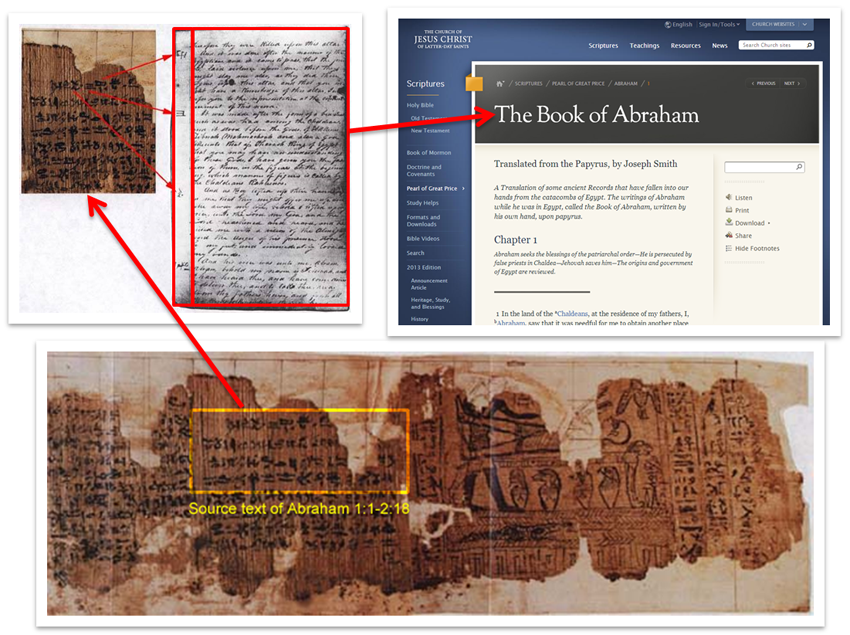
4. “Book of Abraham Papyri” Exposed as Ordinary Funerary Documents: In time, researchers obtained adequate copies of the rediscovered papyri and began comparing them with the Book of Abraham text. But scholar after scholar, both inside and outside the LDS Church, concluded that there was no connection between the Book of Abraham text and the papyri scrolls. Rather, Egyptologists identified the papyri as ordinary Egyptian funerary documents. The section of the papyri used by Joseph was from a document called the Book of Breathings and contained the specific name of the deceased individual for whom it had been prepared. Other papyrus fragments from the collection were from the Egyptian Book of the Dead, an earlier collection of writings with a similar purpose. In fact, the papyrus used by Joseph Smith to “translate” the Book of Abraham has been dated by scholars to the first century AD, almost 2000 years after the time of Abraham.
Before discussing the specific translation issues, it is important to note that the LDS Church admits that the Book of Abraham text bears no relationship to the papyri scrolls. In July 2014, the Church released an essay stating: “Mormon and non-Mormon Egyptologists agree that the characters on the fragments do not match the translation given in the Book of Abraham.”
Moreover, LDS and non-LDS scholars alike conclude that the papyri in the Church’s possession bear no relationship to the Book of Abraham. For example, Dr. Stephen E. Thompson is an LDS scholar who holds a Ph.D. in Egyptology from Brown University. In a paper given at the 1993 Sunstone Symposia, Dr. Thompson presented his reasons for concluding that Joseph Smith did not produce the Book of Abraham by translating it from an Egyptian papyrus scroll he obtained in 1835. Here is a link to a PDF copy of his paper, Egyptology and the Book of Abraham.
Likewise, University of Chicago Egyptology Professor Robert Ritner wrote a paper in 2003 about the Book of Abraham. (Dr. Robert Ritner, “ ‘The Breathing Permit of Hor’ Among the Joseph Smith Papyri,” Journal of Near Eastern Studies, July 2003 issue, Volume 62, Number 3, pp. 161–180.) Ritner is a highly-respected Egyptologist and his interpretation of the papyri is consistent with that of every other non-LDS Egyptologist: the BOA bears no relationship to the papyri. Ritner stated: “Except for those willfully blind, the case is closed.” Ritner also identifies many of the deceitful tactics that LDS apologists use to defend the BOA. You can read the article here.
5. Facsimile 1: The following is analysis of Facsimile 1. The picture on the left shows the rediscovered papyri (including images Joseph Smith and his scribes penciled in). The picture on the right is the final version that appears in the canonized Book of Abraham.

The following image is what Facsimile 1 should look like had Joseph Smith correctly finished the image.
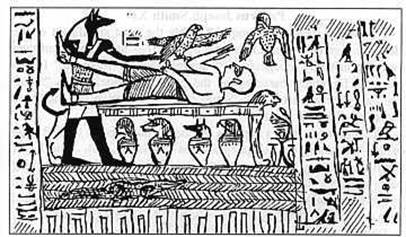
The following is a side-by-side comparison of what Joseph Smith translated in Facsimile #1 versus what it actually says according to modern Egyptologists:
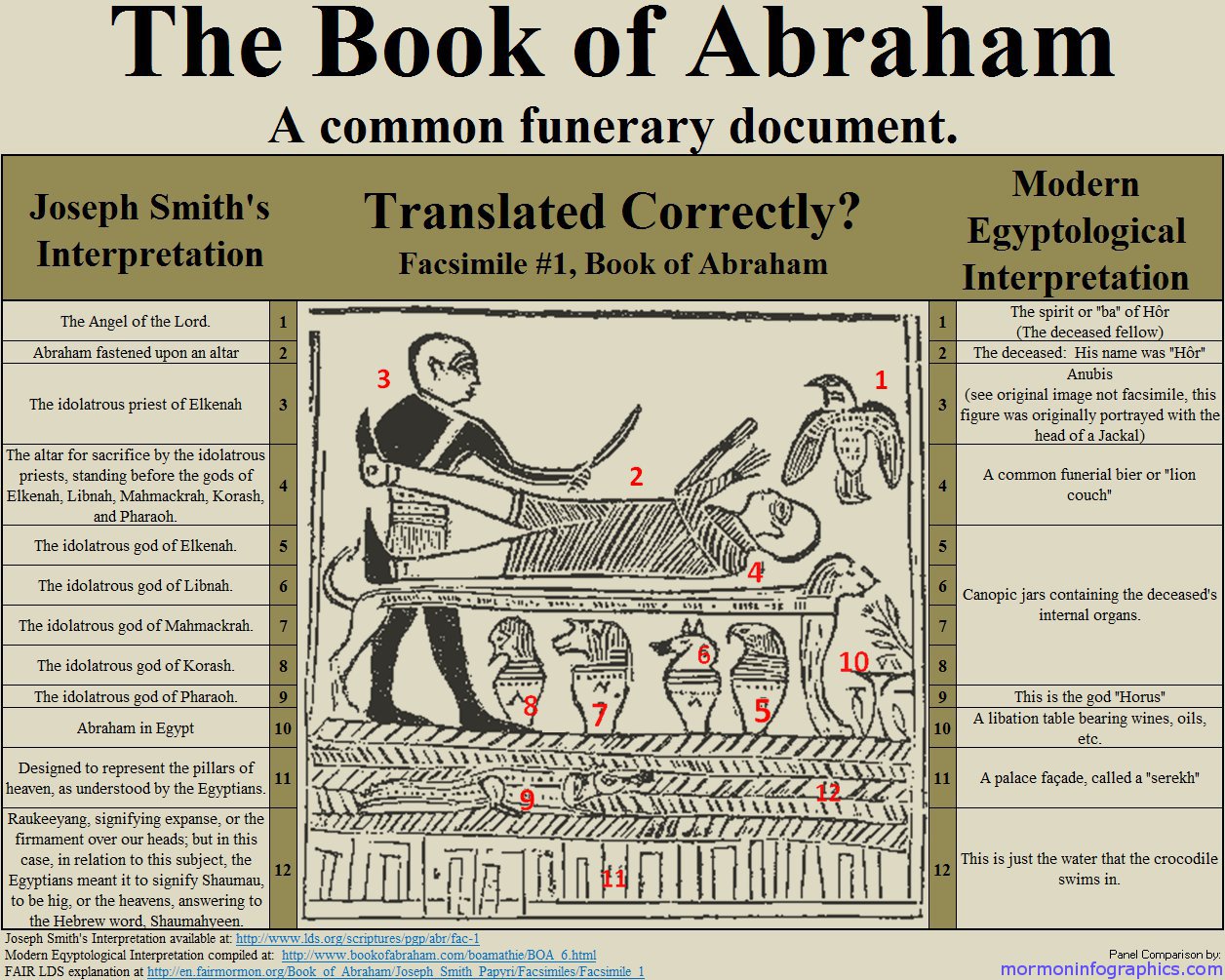
6. Facsimile #2: The following is a side-by-side comparison of what Joseph Smith translated in Facsimile #2 versus what it actually says according to Egyptologists:
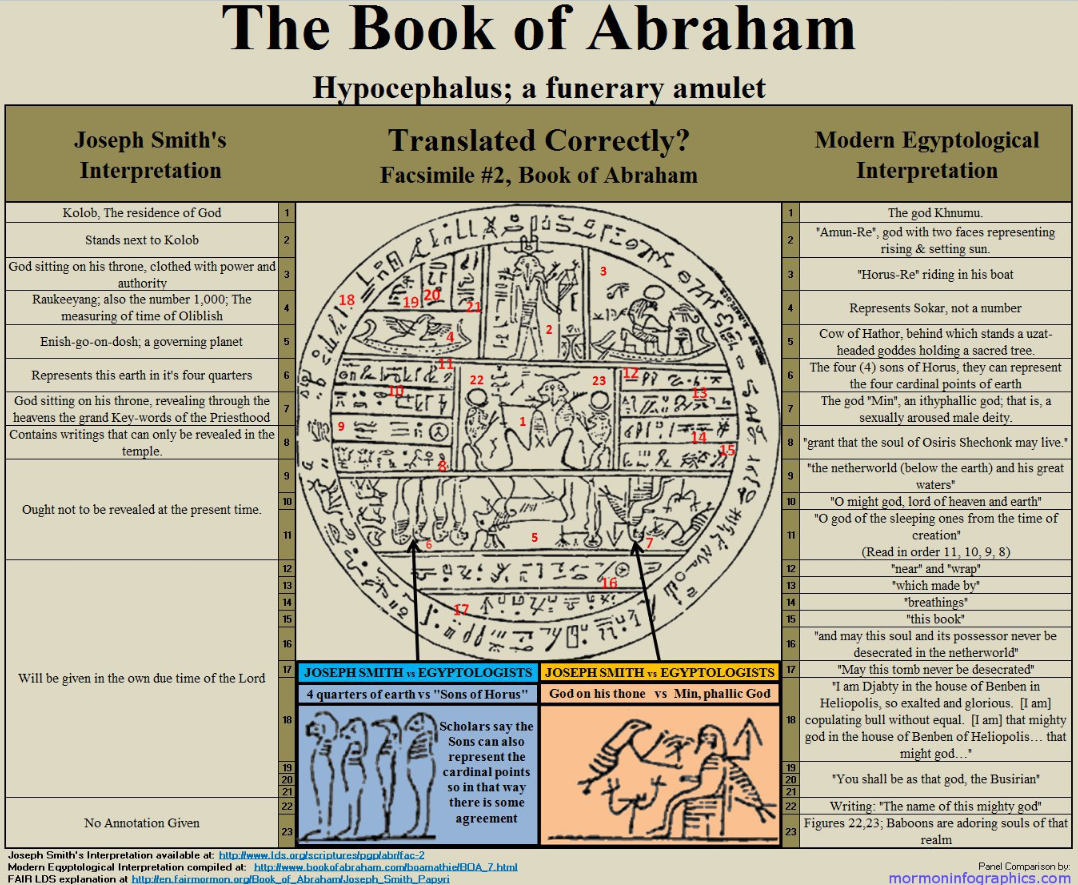
Strangely, Joseph Smith claimed that figure 7 in Facsimile 2 represented “God sitting on his throne.” Egyptologists, however, have determined that it is actually Min, the pagan Egyptian god of fertility or sex.
7. Facsimile #3: The following is a side-by-side comparison of what Joseph Smith translated in Facsimile #3 versus what it actually says according to Egyptologists:
8. Discredited Science: The Book of Abraham (particularly in chapter 3) teaches a Newtonian view of the universe. However, the Book’s Newtonian astronomy concepts, mechanics, and models of the universe have been discredited by 20th Century Einsteinian physics. In fact, Keith Norman, an LDS scholar, has written that, “It is no longer possible [for the LDS Church] to pretend there is no conflict” between the discredited Newtonian “science” contained in the Book of Abraham and the scientific discoveries of today. (Keith E. Norman, Ph.D., Mormon Cosmology: Can it Survive the Big Bang?, Sunstone Magazine, 1986)
Many of the astronomical and cosmological ideas found in both Joseph Smith’s environment and in the Book of Abraham are now out of vogue, and some of these Newtonian concepts are scientific relics. The evidence suggests that the Book of Abraham reflects concepts of Joseph Smith’s time and place rather than those of an ancient world. (Grant Palmer, An Insider’s View of Mormon Origins, p.25.) As one example, Facsimile 2, Figure #5 states the sun gets its light from Kolob. However, the sun’s source of energy is internal, and not external. The sun shines because of thermonuclear fusion; not because it gets its light from any other star as claimed by the Book of Abraham
9. Book’s Use of KJV Text: The primary source for chapters 2, 4, and 5 of the Book of Abraham is Genesis chapters 1, 2, 11, and 12. Sixty-six out of 77 verses are quotations or close paraphrases of KJV wording. (Palmer, An Insider’s View of Mormon Origins, p.19). The Book of Abraham is supposed to be an ancient text written thousands of years ago “by [Abraham’s] own hand upon papyrus.” Why is 17th Century King James Version text contained in the Book? What does this say about the book being anciently written by Abraham?
10. Anachronisms: The Book of Abraham contains numerous anachronisms (which are words, objects, or events that are placed in a time or setting where they do not belong or could not have existed). These anachronisms constitute clear evidence against the book’s authenticity. For example:
- Facsimile 1: This vignette is specifically referred to in the text of the Book of Abraham (Abr. 1:12, 14), but the vignette itself dates to approximately 150–100 B.C.E.
- Chaldea: This name occurs in Abraham 1:1, 8, 13, 20, 23, 29, 30, and 2:4. The Chaldeans appeared in the ninth century B.C.E. in the land south of present-day Iraq (Babylonia), and, apparently, migrated from Syria. If the Chaldeans appeared in the 9th century B.C.E., and Abraham lived prior to 1500 B.C.E., then the reference to the “Chaldeans” in the Book of Abraham is an anachronism of 700 years or more.
- Pharaoh: The Book of Abraham uses the word “Pharaoh” as the name of rulers of Egypt (Abr 1:6, 20, 26) and says that the meaning of the word (Abr 1:20) is “king by royal blood.” The first ruler named “Pharaoh” is identified as a great-grandson of Noah (Abr 1:25). The linguistic problem is that the word “pharaoh” originally meant “great house.” It did not become a title for the king until the beginning of the New Kingdom (18th Dynasty), which began about 1567 B.C. long after Abraham’s death.
- Egyptus (Abr 1:23–25): The Book of Abraham states that “Egyptus” was the wife of Ham (the son of Noah) and the mother of Pharaoh who established the first Egyptian government. (Abr 1:23). The name “Egyptus” is obviously intended to be the source of the name of the country. But here is the linguistic problem: the name “Egypt” is not Egyptian, but Greek (‘Aigyptos’), and thus was not used for the name of the country until the Greeks had contact with it, long after Abraham’s time. Simply stated, the word was not even in existence when Abraham was alive.
11. Church Essay Debunked: On July 8, 2014, the Church published an essay concerning the Book of Abraham in the topical guide of LDS.org: Translation and Historicity of the Book of Abraham. The essay theorizes how Joseph Smith could have “translated” the Book of Abraham when Egyptologists have determined that the Book of Abraham bears no relationship to the papyri from which it was translated. Although numerous scholars have responded to the Church’s essay, Dr. Robert Ritner, Professor of Egyptology in the Oriental Institute, housed at the University of Chicago, published one of the more persuasive rebuttals. In so doing, Ritner deconstructs many of the Church’s claims. Ritner’s response can be found here.
Oddly, the essay does not provide any definitive conclusions as to how the Book of Abraham came about but instead offers three different theories. Each theory is discussed below.
Theory 1
Joseph translated Egyptian papyri into English. The essay states:
Some evidence suggests that Joseph studied the characters on the Egyptian papyri and attempted to learn the Egyptian language. His history reports that, in July 1835, he was “continually engaged in translating an alphabet to the Book of Abraham, and arranging a grammar of the Egyptian language as practiced by the ancients.”
… it appears that Joseph Smith began translating portions of the book of Abraham almost immediately after the purchase of the papyri. Phelps apparently viewed Joseph Smith as uniquely capable of understanding the Egyptian characters: “As no one could translate these writings,” he told his wife, “they were presented to President Smith. He soon knew what they were.
The evidence overwhelmingly supports the idea that Joseph believed that he literally translated (i.e. rendering from one language into another) the papyri into the Book of Abraham. First, Joseph created the “Grammar and Alphabet of the Egyptian Language” after obtaining the papyri, indicating that he was attempting a literal character-by-character translation.
Second, Joseph’s own statements clearly indicate that he believed he was translating the papyri in the literal, traditional manner. For example:
- “I, with W[illiam] W. Phelps and O[liver] Cowdery, as scribes, commenced the translation of some of the characters or hieroglyphics, and much to our joy found that one of the rolls contained the writings of Abraham; another the writings of Joseph of Egypt, &c, a more full account will appear in their place, as I proceed to examine or unfold them.
“As Mr Chandler had been told that I could translate them, he brought me some of the characters, and I gave him the interpretation .…” (From the Joseph Smith Papers, July 6, 1835.)
- “[July, 1835] – The remainder of this month I was continually engaged in translating an alphabet to the Book of Abraham, and arranging a grammar of the Egyptian language s practiced by the ancients.” (History of the Church, Vol. 2, pg. 238.)
- “October 1 [, 1835] – This afternoon labored on the Egyptian alphabet, in company with Brothers O. Cowdery and W.W. Phelps, and during the research, the principles of astronomy as understood by Father Abraham .…” (History of the Church, Vol. 2, pg. 236.)
- “November 17, 1835 – Exhibited the alphabet of the ancient records, to Mr. Holmes, and some others.” (History of the Church, Vol. 2, pg. 316.)
- “The record of Abraham and Joseph, found with the mummies, is beautifully written upon papyrus, with black, and small part red, ink or plant, in perfect preservation.” History of the Church, Vol. 2, pg. 348.)
The Church, however, has a serious problem if Joseph literally translated the papyri as he claimed. Every non-LDS Egyptologist, and a significant portion of LDS Egyptologists, who have examined the papyri in conjunction with the Book of Abraham have concluded that the Book of Abraham bears no relationship to the papyri. In fact, the Church’s essay admits as much:
Neither the rules nor the translations in the grammar book correspond to those recognized by Egyptologists today. None of the characters on the papyrus fragments mentioned Abraham’s name or any of the events recorded in the book of Abraham. Mormon and non-Mormon Egyptologists agree that the characters on the fragments do not match the translation given in the Book of Abraham.
In other words, the papyri that Joseph used to translate the Book of Abraham have nothing to do with the Book of Abraham. How, then, did the book come about? If Joseph literally translated the papyri (as he claimed and as the evidence suggests), then the most logical conclusion is this: Book of Abraham is a fraud.
Theory 2
The papyri translated into the Book of Abraham are missing. The essay states:
Eyewitnesses spoke of ‘a long roll’ or multiple ‘rolls’ of papyrus. Since only fragments survive, it is likely that much of the papyri accessible to Joseph when he translated the book of Abraham is not among these fragments. The loss of a significant portion of the papyri means the relationship of the papyri to the published text cannot be settled conclusively by reference to the papyri.
This theory first surfaced after Egyptologists discovered the conflict between the papyri in the Church’s possession and the Book of Abraham. However, this theory is, at best, suspect. The theory originated from Hugh B. Nibley in a series of articles he published in 1968. According to Nibley, Joseph F. Smith visited the Joseph’s Mansion House in Nauvoo in 1843 or 1844. During the visit, Joseph F. Smith saw the papyri and indicated that one of the rolls of papyri, when unrolled on the floor, extended through two rooms of the Mansion House. However, there are numerous problems with this account. First, Joseph F. Smith was only five years old when he saw the papyri. Second, Joseph F. Smith did not describe the length of the papyri until 1906, nearly 65 years after it occurred. Third, Nibley’s depiction of the events relies on multiple levels of hearsay, as we do not have Joseph F. Smith’s first-person account. Rather, Joseph F. Smith related his memory of the papyri (which occurred 65 years earlier when he was five or six years old) to Preston Nibley (Hugh B. Nibley’s older half-brother), who then relayed the story to Hugh B. Hibley, who then published the story in a series of articles in 1968. Clearly, Theory 2 is not based on reliable information.
Regardless, when the essay states that it only has a “fraction” of the papyri, the Church implies that the lost portion of the papyri is the actual source of the Book of Abraham. But scholars have mathematically measured the scroll and discredited this claim. For example, Egyptologist Robert Ritner (who published his findings in his book, “The Joseph Smith Egyptian Papyri: A Complete Edition,” 2013), as well Andrew W. Cook and Christopher C. Smith (who published their findings in their article, “The Original Length of the Scroll of Hor,” Dialogue: A Journal of Mormon Thought, Winter 2010) have studied the issue extensively and determined that the Church has the vast majority of the original papyri.
Moreover, the Grammar and Alphabet that Joseph produced, along with the transcribed hieroglyphs and correlating interpretations of the hieroglyphs (which appear in the Book of Abraham), make it clear that Joseph had virtually no understanding of Egyptian hieroglyphs.
Notably, the Church’s essay makes a disingenuous claim in support of Theory 2: “The loss of a significant portion of the papyri means the relationship of the papyri to the published text cannot be settled conclusively by reference to the papyri.” The Church essentially claims that we cannot test Joseph’s translation because we do not have the actual fragments Joseph used. However, the Church admits that we do have three vignettes or facsimiles that Joseph claimed to have translated. These facsimiles appear in the canonized version of the Book of Abraham along with numerous footnotes containing Joseph’s translation of various depictions in the facsimiles. Oddly, the Church claims that we cannot test Joseph’s translation because we do not have the actual fragments Joseph used in translation while ignoring the fact that the Church possesses (and even published with the Book of Abraham) three facsimiles along with Joseph’s corresponding translation.
More importantly, the essay fails to explain why Joseph’s translations of the canonized facsimiles are conclusively refuted by Egyptologists.
Theory 3
Joseph did not translate the Book of Abraham in the traditional sense but received it via revelation. The essay states as follows:
Alternatively, Joseph’s study of the papyri may have led to a revelation about key events and teachings in the life of Abraham, much as he had earlier received a revelation about the life of Moses while studying the Bible. This view assumes a broader definition of the words translator and translation. According to this view, Joseph’s translation was not a literal rendering of the papyri as a conventional translation would be. Rather, the physical artifacts provided an occasion for meditation, reflection, and revelation. They catalyzed a process whereby God gave to Joseph Smith a revelation about the life of Abraham, even if that revelation did not directly correlate to the characters on the papyri.”
As previously discussed, Joseph frequently used the word “translate” in reference to his work with the papyri. Accordingly, the Church theorizes that perhaps Joseph did not actually translate the Book of Abraham in the traditional sense but instead received it through revelation. The Church’s essay goes so far as to claim that “Joseph Smith did not claim to know the ancient languages of the records that he was translating.” Therefore, the Church alters the definition of “translate” to mean that Joseph “transmitted” information about Abraham from a heavenly sphere to an earthly sphere. If we follow this logic, Joseph could have been presented with any object (including objects wholly unrelated to the Book of Abraham) and learned about the life and teachings of Abraham (or any other topic).
As a preliminary matter, the Church’s assertion that Joseph “did not claim to know ancient languages” is inaccurate. As noted by Ritner, in Joseph Smith’s published 1844 “Appeal to the Freemen of the State of Vermont, the ‘Brave Green Mountain Boys,’ and Honest Men,” Smith claimed to know Chaldean and Egyptian, among other languages.
Regardless, the Church’s re-definition of the term “translate” is accompanied with a variety of problems and unanswered questions. Why would Joseph need a physical object, such as the papyri, to receive revelation (particularly when he received numerous revelations in the Doctrine and Covenants without the assistance of a revelatory catalyst)? Why would Joseph pay $2,400 to obtain papyri that bore no relationship to Abraham in order to then receive the Book of Abraham via revelation?
More importantly, why would Joseph (1) tell people he was translating the papyri; (2) study the Egyptian on the papyri; and (3) create an entire Grammar and Alphabet if he was not actually translating the papyri? Joseph clearly knew the difference between translation and revelation as evidenced the differing origins of the Book of Mormon and Doctrine and Covenants. Why, then, would he claim to have translated the Book of Abraham if he actually received it through revelation?
Simply stated, the Church’s assertion that the papyri were merely a catalyst for revelation does not withstand careful scrutiny.
12. Joseph Smith’s Five Sources for Composing the Book of Abraham: Nearly all of the Book of Abraham can be accounted for in five different 19th Century texts that were available to Joseph Smith. LDS historian and former CES educator Grant Palmer analyzes these five texts in chapter 1 of his book, An Insider’s View of Mormon Origins. The following is a summary of his analysis (and a more detailed excerpt can he found here):
- Abraham 1; Facsimile #1, #3: Abraham’s biographical information in Abraham 1 and Joseph Smith’s claim of what these two Facsimile pictures portray comes from The Works of Flavius Josephus. Joseph owned an 1830 edition of this book. Joseph’s detailed explanations for the individual Egyptian characters on these two Facsimiles in the Book of Abraham have been thoroughly discredited by Egyptologists.
- Abraham 2, 4–5: Eighty-six percent of the verses in these three chapters came from Genesis, 1, 2, 12, and 11:28–29. This material came from a 1769 edition or later printing of the King James Version of the Bible (including its translation errors).
- Abraham 3; Facsimile 2: The text of Abraham 3 and Facsimile 2 contains some remarkable resemblances to the astronomical concepts, phrases, and other motifs found in Thomas Dick’s, Philosophy of a Future State. Smith owned an 1830 copy of this book.
- Abraham 3; Facsimile 2: Thomas Taylor’s 1816 book, The Six Books of Proclus on the Theology of Plato, especially volume 2, also contains most of the motifs in Abraham 3 and Facsimile 2. Dick and Taylor both contain a number of exact phrases found in Abraham 3 and Facsimile 2.
- Strange names: The few Hebrew names and phrases found in the Book of Abraham are compatible with Joseph Smith’s study with Hebrew scholar Joshua Seixas during the winter of 1835–36, in Ohio.
13. Information: There is a great deal of readily-available online information regarding the Book of Abraham, including Charles M. Larson’s book, By His Own Hand upon Papyrus, and Kevin Mathie’s Examining the Book of Abraham. Additionally, the following video gives a concise overview of the Book of Abraham.
14. Conclusions: Kevin Mathie identifies the following conclusions we can draw from the BOA:
- Joseph Smith was clear in his statements and in his writings that he was “translating” text from the papyri (rather than just using the papyri as a catalyst for revelation). Furthermore, Church leaders after Joseph, beginning with Brigham Young, were adamant that the Book of Abraham is a holograph written by Abraham.
- Scholars now know how to read ancient Egyptian, and are very familiar with ancient Egyptian religious concepts and practices. The very same papyri that were used in the creation of the Book of Abraham, can be, and have been, translated by competent Egyptologists (including those at BYU). These scholarly translations make no mention of Abraham, nor do the papyri contain anything resembling the text of the Book of Abraham.
- The existing Facsimiles have been thoroughly examined by Egyptologists and have been found to be very different from Joseph Smith’s interpretations. At best, there are only superficial similarities in a few figures.
- The text of the Book of Abraham contains anachronisms — names of people and places that did not exist in Abraham’s day. Even Facsimile #1 could not have been produced “by the hand” of Abraham, having been dated to be at least 14 centuries too recent. Additionally, there are specific concepts in the Book of Abraham that reflects a 19th-century, Newtonian cosmology.
The evidence demonstrates that the Book of Abraham is not what Joseph Smith claimed. Joseph may have thought he was utilizing a holographic document from Abraham, but it is clear that this was not the case. The papyrus that Joseph claimed to be the Book of Abraham is dated at least 1,400 years after Abraham’s death, and very possibly close to 2,000 years later (not to mention the fact that scholars can now translate the papyrus and determine what they really say). And, even if Joseph received the Book of Abraham solely from inspiration and unrelated to any papyrus or physical document — as some church members are now beginning to claim (despite statements from numerous prophets to the contrary) — this theory does not explain the anachronisms found within the Book of Abraham. A much more plausible explanation is that the Book of Abraham was created by Joseph Smith rather than Abraham.
